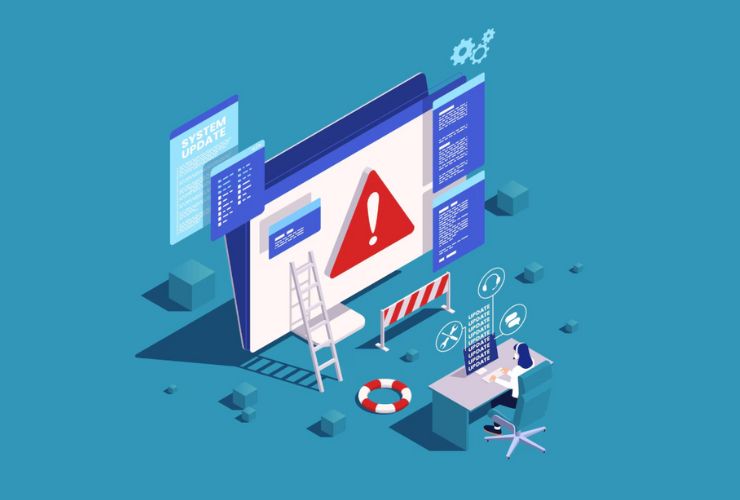Although modern society lives in a data-centric world, which makes backups an important aspect of recovery plans, without conducting regular disaster recovery (DR) drills, there is no reasonable expectation a business can have, that if disaster strikes (hardware failure, cyber-attacks, natural disasters for example) that they can recover from it using their backups. Only a proper DR drill can demonstrate and validate if there is any recovery potential in a set of backups.
Disaster recovery drills simulate realistic failures to ensure that backup recovery times, recovery consistency, and business continuity processes are effective. DR drills provide an organization the opportunity to discover possible gaps in their recovery plan, create team training on how to respond to real emergencies, and increase overall business resilience to unexpected events.
Why Backups Are Not Enough
Many organizations will automate their backups and think, “if we ever need to restore from backups, it will be ok”. A few things to consider when it comes to backups that have not been validated are:
- Data corruption and backups not completed: Backups may silently fail due to file corruption, misconfigured schedules, or skipped databases.
- Unverified recovery process: Who knows, maybe the companies DR process is simply outdated or might not be complete altogether. Depending on the level of detail, careful and methodical failovers take longer when you are trying to recover systems and organize.
- Downtime Impacts: Every hour of unexpected downtime impacts revenue, customer trust, and operational efficiency.
- Compliance requirements: Regulations such as GDPR, HIPAA, and PCI DSS generally require you to have both tested, and verified recovery plans, and not just backups.
Key Disaster Recovery Drill Strategies
Full Restore Test
Carry out a full restore of the backups in an isolated environment to assess the integrity and functionality of the restored system. This exercise ensures that all databases, applications, and services work correctly after a restore.
Partial Recovery Drill
Test mission-critical systems or high-priority datasets to validate speed of recovery, minimize downtimes, or complete high-priority operations.
Simulated Outage Scenario
Simulate an incident, a cyber-attack, hardware failure, or natural disaster, to assess team preparedness, system preparedness, and response times.
Recovering Time Objective (RTO) Testing
Find out how long it takes for the systems to come online and verify that aligns with the organization’s business continuity objectives.
Recovering Point Objective (RPO) Verification
Make sure the applications or systems do not push data loss beyond acceptable limits so that no operational harm is done that cannot be reversed.
Best Practices
- Conduct Drills On A Regular Basis: Conducting these drills quarterly, bi-annually, or annually depending on the key importance of the business.
- Document Recovery Procedures: Document step-by-step guides for each of the systems and update it when ever there is an infrastructure change.
- Include Multiple Teams: Include teams from IT, database administrators, application owners, or business stakeholders to ensure end-to-end preparedness for the intelligent responders Drill.
- Automation & Monitoring: Use monitoring and automation tools to detect failures during drills and produce information-rich output of actions taken.
- Review & Learn: Conduct post-drill evaluations, document lessons learned, and refine recovery processes accordingly.
Other backup considerations for DR Planning
- Cloud and hybrid backup strategies: Use a cloud or hybrid approaches to add geographic redundancy and quick recovery of your data.
- Immutable backups: Use tamper-proof storage that will protect from ransomware attacks and also accidental deletions.
- Regular audit and compliance checks: Make sure your drills meet industry compliance standards while maintaining your level of audit readiness.
- Performance and scalability testing: Make sure recovery processes are scalable as your data grows and your systems architecture is evolving.
How Empirical Edge can help
At Empirical Edge, we offer complete database backup and disaster recovery services so that no matter what happens, your organization is always ready. Our services include:
- Automated backup scheduling and monitoring
- Immutable storage for tamper-proof data preservation
- Cloud and Hybrid backup services
- Disaster recovery drills and testing or validating these tests
- Compliance ready backup and recovery services
We also can help your organization with the custom design and implementation of disaster recovery plans to meet your organizational needs and objectives to take maximum advantage of your downtime with successful recovery and operations. If you work with Empirical Edge, your backups will not only be stored. They will be validated, tested, recoverable, and there when you need it.
Example: Real World Impact
A medium sized eCommerce company encountered an unexpected moment of database corruption. They had backups, but had never tested their recovery strategies, which resulted in over 12 hours to recover all systems, lost sales, disgruntled customers, and a scar to their reputation. They began using Empirical Edge to regularly perform DR drills, on subsequent drills the company was able to recover the same database under 1 hour, which was great.
Conclusion
Having backups does not guarantee business continuity. Disaster Recovery (DR) drills are to test, evaluate, and improve backup processes and will ultimately reduce downtime and improve resilience. An organization should regularly test their recovery plans, run their team through simulations, and utilize an experts services like Empirical Edge give organizations confidence that they are adequately protecting data, delivering on compliance requirements, and maintaining business continuity in the event of an unexpected disaster.
Main takeaway: consider backups the foundation, while consider DR drills the true test of preparedness. Those that complete frequent validation for recovery readiness will be far better off when faced with challenges to their business continuity and more capable of protecting their reputation, revenue, and trust from their customers.









